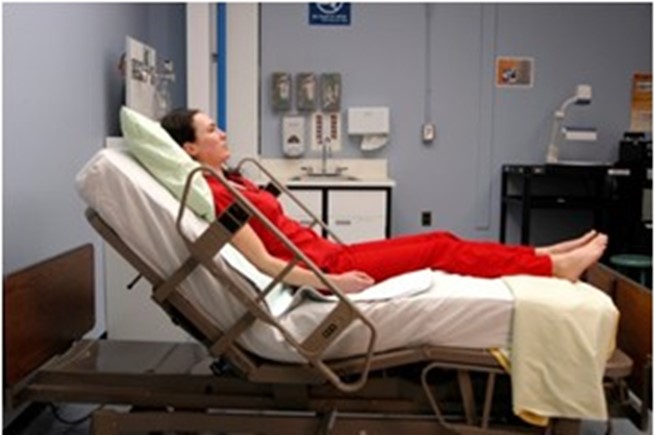A nurse is caring for a client who has been placed in halo traction to immobilize his cervical spine.
Which of the following actions should the nurse take?
Apply a pelvic girdle.
Place the client in a supine position.
Elevate the head of the bed.
Elevate the foot of the bed.
The Correct Answer is C
Elevating the head of the bed can help to reduce pressure on the cervical spine and promote comfort for the client.
Choice A is not correct because a pelvic girdle is not used with halo traction.
Choice B is not correct because placing the client in a supine position can increase pressure on the cervical spine.
Choice D is not correct because elevating the foot of the bed would not provide any benefit for a client in halo traction.
Nursing Test Bank
Naxlex Comprehensive Predictor Exams
Related Questions
Correct Answer is A
Explanation
A client who has a blood pressure of 140/90 mm Hg. Hypertension is a contraindication to oral contraceptives.
Choice B is incorrect because having a menstrual cycle every 14 days is not a contraindication to oral contraceptives.
Choice C is incorrect because having a hematocrit of 39% is not a contraindication to oral contraceptives.
Choice D is incorrect because being 15 years old and having acne is not a contraindication to oral contraceptives.
Correct Answer is D
Explanation
This can help prevent stomach acid from moving up into the esophagus and causing heartburn at night.

Choice A is not correct because exercise is generally safe during pregnancy and can have many benefits.
Choice B is not correct because sodium bicarbonate may not be safe for pregnant women to take.
Choice C is not correct because heartburn during pregnancy is common and usually does not require emergency medical care.
Whether you are a student looking to ace your exams or a practicing nurse seeking to enhance your expertise , our nursing education contents will empower you with the confidence and competence to make a difference in the lives of patients and become a respected leader in the healthcare field.
Visit Naxlex, invest in your future and unlock endless possibilities with our unparalleled nursing education contents today
Report Wrong Answer on the Current Question
Do you disagree with the answer? If yes, what is your expected answer? Explain.
Kindly be descriptive with the issue you are facing.
